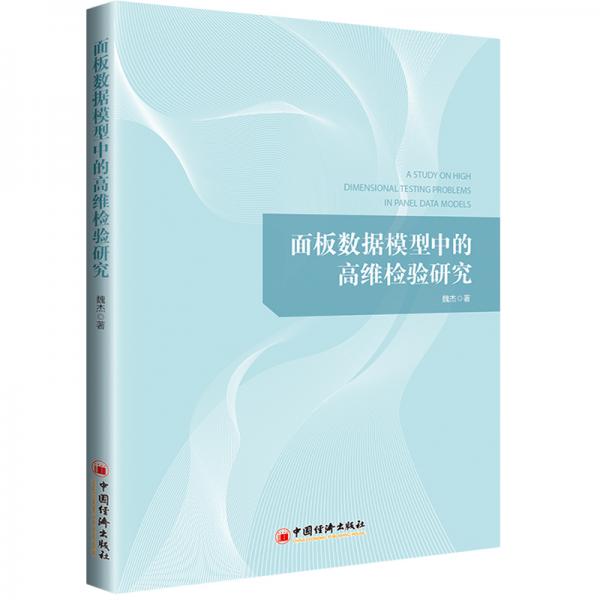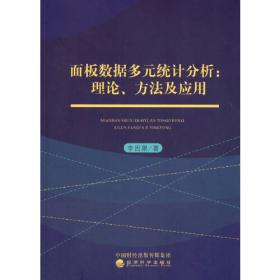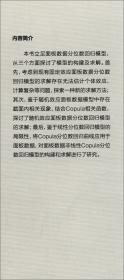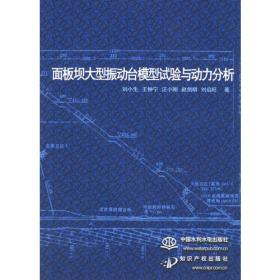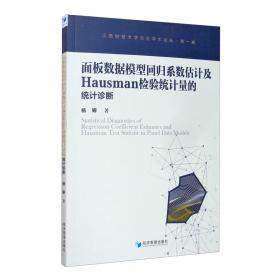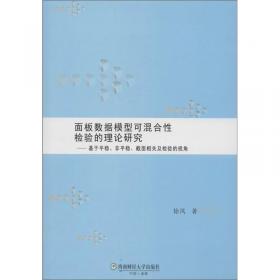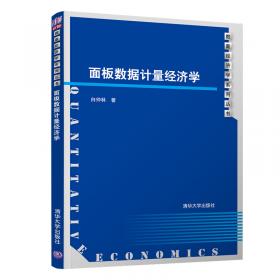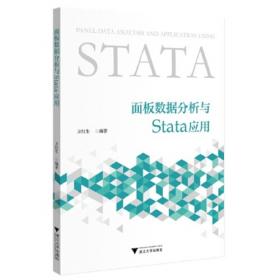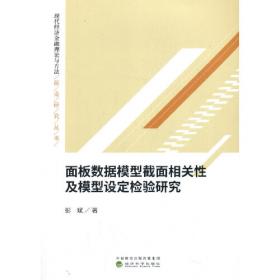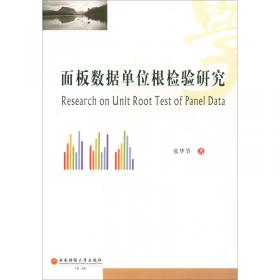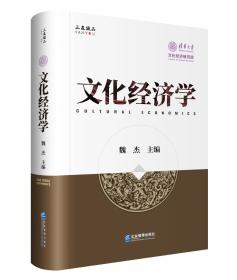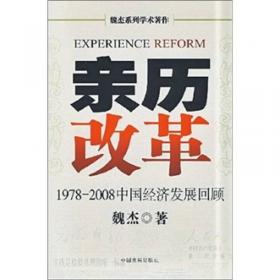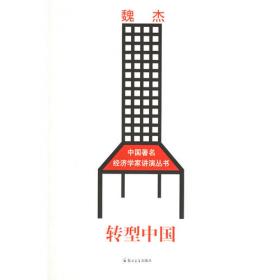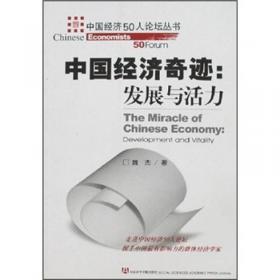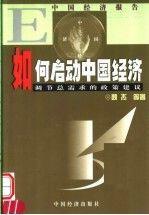面板数据模型中的高维检验研究
出版时间:
2019-07
版次:
1
ISBN:
9787513656771
定价:
68.00
装帧:
平装
开本:
710mm*1000mm1/16
纸张:
胶版纸
页数:
210页
1人买过
-
本书的研究受到了国家自然科学基金青年项目“时变交互效应面板模型:估计、检验与应用”(71803054)和教育部青年基金项目“高维面板中的稳健检验及其功效提升(17YJC790159)的资助。在大数据时代背景下,随着微观和宏观层面数字信息的不断丰富完善,面板数据模型在实证研究中正受到日益广泛的重视和应用,各种基于面板数据特征的计量方法不断涌现,并被应用于解决经济中的重要现实问题。面板数据模型可以有效地处理个体和时间异质性效应,而在个体和时间维度较大的情形下,相应的计量估计会因高维数据而产生有别于以往传统方法的新特性。而现有的研究往往忽视了高维环境下面板模型的新特征,从而可能会得出谬误的研究结论。
本书汇集了作者对面板模型的三类重要问题提出的检验理论方法,重点探讨了当待估或待检验参数维度增大的情况下,如何构造有效的计量检验加以甄别,从而对实证研究中特定方法的适用性问题提出建设性的科学建议。
第二章提出了一个面板模型中严格外生检验的方法,所考虑的情形是个体数量趋于无穷大但时间维度固定。检验的原理是基于瓦尔德统计量的极值分布。在适当的条件下,我们证明了检验统计量的极限分布和二致性,同时构造了自助法以提升检验的有限样本表现,并通过蒙特卡洛模拟验证了检验的性质。
第三章,我们构造了交互效应面板中斜率同质性的检验,该检验可适用于存在时空相关性和异方差性下的模型。我们起初构造了二次型检验统计量,并证明了其水平和检验功效。然而,该检验在高维环境下可能会产生功效缺失。我们因此将此二次型统计量和功效提升统计量相结合,再不改变检验水平的基础上提高了检验功效,并对这仙性质加以了证明。蒙特卡洛模拟结果印证了检验功效提升这一事实。在对异质波动率之谜的实证研究中,我们的检验发现,只有不到3%的股票显示出了波动率的异质性影响。
第四章考虑了半参数动态面板计数模型,这里的高维特性来自于待估方程的无穷维特征。我们提出了两阶段估计法进行估计,在第1阶段,我们考虑了样条*小距离估计量,在第二阶段,我们基于非线性积分方程进仛步改进估计结果,并证明了当个体数量趋于无穷大而时间固定时估计量的渐进性质。我们提出了对未知非参数方程的模型设定检验,并证明了检验的理论性质。蒙特卡洛模拟证据支持了我们的两阶段估计法和设定检验结论。朂后,我们将该方法应用于医疗鞗求的实证研究中,从中检验出了经济变量间显著的非线性特征 魏杰,华中科技大学经济学院讲师,美国加州大学河滨分校经济学博士(2014年),浙江大学经济学硕士(2009年),厦门大学经济学本科(2007年),所研究方向为计量经济学中的面板数据模型和非参数半参数模型。
现主持国家自然科学基金青年项目“时变交互效应面板模型:估计、检验与应用”以及教育部青年基金项目“高维面板中的稳健检验及其功效提升”。研究论文发表于Economics Letters等国内外*威学术期刊,担任Econometrics Review,Emprical Economics和Economics Modelling等国际学术期刊匿名审稿人。 Contents
Chapter 1 Introduction 1
1.1 Introduction ...................... 1
Chapter 2 APracticalTestforStrictExogeneityinLin-earPanelDataModelswithFixedE.ects5
2.1 Introduction ...................... 5
2.2 Thehypothesis..................... 8
2.3 Theteststatistic .................... 11
2.4 The asymptotic properties of the test statistic . . . 14
2.5 MonteCarlosimulations ............... 19
2.5.1 Data generating processes . . . . . . . . . . 20
2.5.2 Simulationresults............... 21
2.6 An application to agricultural production . . . . . 23
2.7 Conclusions ...................... 26
2.8 Appendix........................ 28
Chapter 3 ARobustTestofSlopeHomogeneityinPanelDataModelswithPowerEnhancement35
3.1 Introduction ...................... 35
3.2 Themodelandestimation .............. 41
3.2.1 ThepanelARDLmodel . . . . . . . . . . . 41
3.2.2 TheCCErepresentation . . . . . . . . . . . 43
3.2.3 Estimation ................... 47
3.3 Testing ......................... 49
3.3.1 The hypothesis and asymptotic distribution ofourteststatistic .............. 49
3.3.2 A bootstrap version of our test . . . . . . . . 55
3.4 PowerEnhancement.................. 57
3.4.1 The composed test statistic . . . . . . . . . . 57
3.4.2 Asymptotic properties of PE . . . . . . . . . 59
3.5 Simulations....................... 64
3.5.1 DataGeneratingProcess . . . . . . . . . . . 64
3.5.2 Findings .................... 68
3.6 EmpiricalApplication................. 73
3.7 Conclusion ....................... 79
3.8 Proofsformaintheorems............... 85
3.9 TechnicalLemmas................... 118
Chapter 4 SemiparametricEstimationandSpeci.cationTestingofDynamicPanelCountDataModels133
4.1 Introduction ...................... 133
4.2 Estimation of semiparametric panel countdatamodels ................... 140
4.2.1 Sieve Minimum Distance Estimation . . . . 141
4.2.2 Kernel estimation based on a nonlinear integralequation ................ 146
4.3 Asymptoticproperties ................ 152
4.3.1 Asymptotic properties for the SMD estimator152
4.3.2 Asymptotic properties for the local smoothing estimator of g().............. 157
4.4 A speci.cation test for the linear function form of g () ........................... 160
4.4.1 Hypotheses................... 160
4.4.2 The test statistic and asymptotic properties 162
4.4.3 A bootstrap version of the test . . . . . . . . 166
4.5 MonteCarlosimulations ............... 167
4.5.1 Data generating processes and implementation ...................... 168
4.5.2 Simulationresults............... 170
4.6 Empiricalapplication ................. 174
4.6.1 Data and implementation . . . . . . . . . . 177
4.6.2 Estimation and testing results . . . . . . . . 178
4.7 Conclusion ....................... 183
4.8 Description of variables in empirical study . . . . . 187
4.9 Proofofmainresults ................. 189
-
内容简介:
本书的研究受到了国家自然科学基金青年项目“时变交互效应面板模型:估计、检验与应用”(71803054)和教育部青年基金项目“高维面板中的稳健检验及其功效提升(17YJC790159)的资助。在大数据时代背景下,随着微观和宏观层面数字信息的不断丰富完善,面板数据模型在实证研究中正受到日益广泛的重视和应用,各种基于面板数据特征的计量方法不断涌现,并被应用于解决经济中的重要现实问题。面板数据模型可以有效地处理个体和时间异质性效应,而在个体和时间维度较大的情形下,相应的计量估计会因高维数据而产生有别于以往传统方法的新特性。而现有的研究往往忽视了高维环境下面板模型的新特征,从而可能会得出谬误的研究结论。
本书汇集了作者对面板模型的三类重要问题提出的检验理论方法,重点探讨了当待估或待检验参数维度增大的情况下,如何构造有效的计量检验加以甄别,从而对实证研究中特定方法的适用性问题提出建设性的科学建议。
第二章提出了一个面板模型中严格外生检验的方法,所考虑的情形是个体数量趋于无穷大但时间维度固定。检验的原理是基于瓦尔德统计量的极值分布。在适当的条件下,我们证明了检验统计量的极限分布和二致性,同时构造了自助法以提升检验的有限样本表现,并通过蒙特卡洛模拟验证了检验的性质。
第三章,我们构造了交互效应面板中斜率同质性的检验,该检验可适用于存在时空相关性和异方差性下的模型。我们起初构造了二次型检验统计量,并证明了其水平和检验功效。然而,该检验在高维环境下可能会产生功效缺失。我们因此将此二次型统计量和功效提升统计量相结合,再不改变检验水平的基础上提高了检验功效,并对这仙性质加以了证明。蒙特卡洛模拟结果印证了检验功效提升这一事实。在对异质波动率之谜的实证研究中,我们的检验发现,只有不到3%的股票显示出了波动率的异质性影响。
第四章考虑了半参数动态面板计数模型,这里的高维特性来自于待估方程的无穷维特征。我们提出了两阶段估计法进行估计,在第1阶段,我们考虑了样条*小距离估计量,在第二阶段,我们基于非线性积分方程进仛步改进估计结果,并证明了当个体数量趋于无穷大而时间固定时估计量的渐进性质。我们提出了对未知非参数方程的模型设定检验,并证明了检验的理论性质。蒙特卡洛模拟证据支持了我们的两阶段估计法和设定检验结论。朂后,我们将该方法应用于医疗鞗求的实证研究中,从中检验出了经济变量间显著的非线性特征
-
作者简介:
魏杰,华中科技大学经济学院讲师,美国加州大学河滨分校经济学博士(2014年),浙江大学经济学硕士(2009年),厦门大学经济学本科(2007年),所研究方向为计量经济学中的面板数据模型和非参数半参数模型。
现主持国家自然科学基金青年项目“时变交互效应面板模型:估计、检验与应用”以及教育部青年基金项目“高维面板中的稳健检验及其功效提升”。研究论文发表于Economics Letters等国内外*威学术期刊,担任Econometrics Review,Emprical Economics和Economics Modelling等国际学术期刊匿名审稿人。
-
目录:
Contents
Chapter 1 Introduction 1
1.1 Introduction ...................... 1
Chapter 2 APracticalTestforStrictExogeneityinLin-earPanelDataModelswithFixedE.ects5
2.1 Introduction ...................... 5
2.2 Thehypothesis..................... 8
2.3 Theteststatistic .................... 11
2.4 The asymptotic properties of the test statistic . . . 14
2.5 MonteCarlosimulations ............... 19
2.5.1 Data generating processes . . . . . . . . . . 20
2.5.2 Simulationresults............... 21
2.6 An application to agricultural production . . . . . 23
2.7 Conclusions ...................... 26
2.8 Appendix........................ 28
Chapter 3 ARobustTestofSlopeHomogeneityinPanelDataModelswithPowerEnhancement35
3.1 Introduction ...................... 35
3.2 Themodelandestimation .............. 41
3.2.1 ThepanelARDLmodel . . . . . . . . . . . 41
3.2.2 TheCCErepresentation . . . . . . . . . . . 43
3.2.3 Estimation ................... 47
3.3 Testing ......................... 49
3.3.1 The hypothesis and asymptotic distribution ofourteststatistic .............. 49
3.3.2 A bootstrap version of our test . . . . . . . . 55
3.4 PowerEnhancement.................. 57
3.4.1 The composed test statistic . . . . . . . . . . 57
3.4.2 Asymptotic properties of PE . . . . . . . . . 59
3.5 Simulations....................... 64
3.5.1 DataGeneratingProcess . . . . . . . . . . . 64
3.5.2 Findings .................... 68
3.6 EmpiricalApplication................. 73
3.7 Conclusion ....................... 79
3.8 Proofsformaintheorems............... 85
3.9 TechnicalLemmas................... 118
Chapter 4 SemiparametricEstimationandSpeci.cationTestingofDynamicPanelCountDataModels133
4.1 Introduction ...................... 133
4.2 Estimation of semiparametric panel countdatamodels ................... 140
4.2.1 Sieve Minimum Distance Estimation . . . . 141
4.2.2 Kernel estimation based on a nonlinear integralequation ................ 146
4.3 Asymptoticproperties ................ 152
4.3.1 Asymptotic properties for the SMD estimator152
4.3.2 Asymptotic properties for the local smoothing estimator of g().............. 157
4.4 A speci.cation test for the linear function form of g () ........................... 160
4.4.1 Hypotheses................... 160
4.4.2 The test statistic and asymptotic properties 162
4.4.3 A bootstrap version of the test . . . . . . . . 166
4.5 MonteCarlosimulations ............... 167
4.5.1 Data generating processes and implementation ...................... 168
4.5.2 Simulationresults............... 170
4.6 Empiricalapplication ................. 174
4.6.1 Data and implementation . . . . . . . . . . 177
4.6.2 Estimation and testing results . . . . . . . . 178
4.7 Conclusion ....................... 183
4.8 Description of variables in empirical study . . . . . 187
4.9 Proofofmainresults ................. 189
查看详情
-
全新
浙江省嘉兴市
平均发货13小时
成功完成率94.89%
-
全新
广东省广州市
平均发货7小时
成功完成率93.75%
-
 5
5
全新
河北省保定市
平均发货33小时
成功完成率81.57%
-
 5
5
全新
四川省成都市
平均发货21小时
成功完成率89.86%
-
全新
北京市海淀区
平均发货16小时
成功完成率88.43%
-
全新
广东省广州市
平均发货17小时
成功完成率94.77%
-
全新
广东省广州市
平均发货17小时
成功完成率93.25%
-
全新
广东省广州市
平均发货16小时
成功完成率92.31%
-
全新
北京市西城区
平均发货16小时
成功完成率92.03%
-
全新
浙江省嘉兴市
平均发货9小时
成功完成率95.54%
-
八五品
湖北省咸宁市
平均发货15小时
成功完成率92.79%
-
全新
北京市通州区
平均发货9小时
成功完成率89.67%
-
 3
3
八品
内蒙古包头市
平均发货17小时
成功完成率96.86%
-
 2
2
全新
河北省保定市
平均发货31小时
成功完成率80.37%
-
全新
上海市黄浦区
平均发货10小时
成功完成率92.16%
-
 2
2
全新
河北省保定市
平均发货30小时
成功完成率81.41%
-
 8
8
九五品
湖北省武汉市
平均发货19小时
成功完成率66.67%

 占位居中
占位居中

